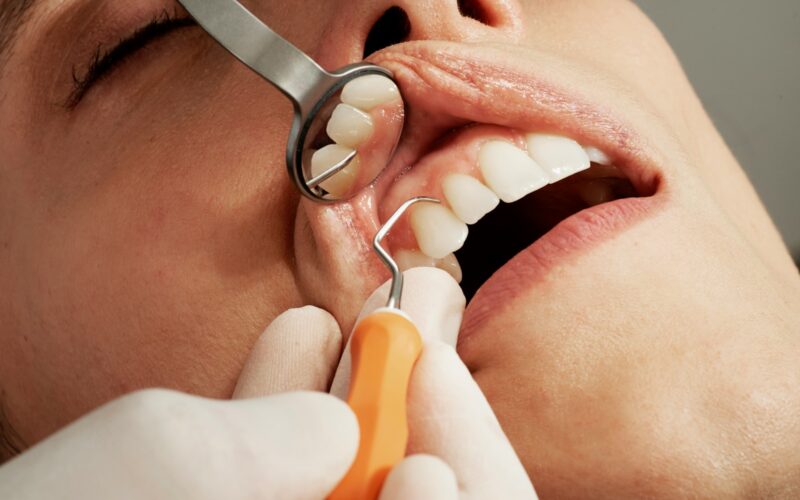Maintaining good oral health is essential for overall well-being, but dental care can be costly. Dental insurance provides individuals and families the financial support necessary for crucial dental services and treatments. In this article, we will explore your understanding of dental insurance, its coverage options, and benefits in safeguarding oral health while managing expenses.
Understanding Dental Insurance
Dental insurance is a health insurance that focuses on covering dental care expenses. It is designed to provide financial assistance for preventive, routine, and emergency dental treatments.
Dental insurance plans typically involve a monthly premium, a deductible, co-pays, and coverage limits. The specifics of each plan can vary, so it’s essential to review the details before selecting a policy.
Coverage and Benefits
1. Preventive Services:
Dental insurance usually covers preventive services, such as routine check-ups, cleanings, and X-rays. These preventive measures are crucial to keep your mouth healthy and avoid developing more significant dental problems later on.
2. Basic Restorative Services:
Dental insurance often covers basic therapeutic procedures, including fillings and extractions. These treatments address common dental problems and help preserve the structure and function of teeth.
3. Major Restorative Services:
Some dental insurance plans cover major restorative procedures, like crowns, bridges, dentures, and root canals. These treatments are more complex and costly, but dental insurance can significantly offset the expenses.
4. Orthodontic Coverage:
While orthodontics is not always covered by dental insurance coverage treatment, some offer partial or complete coverage for braces or aligners, particularly for children or individuals with specific orthodontic needs.
5. Emergency Dental Care:
Dental insurance can cover emergency dental care, such as treatment for dental injuries or severe pain. This coverage ensures that individuals can seek immediate assistance without worrying about the financial burden.
Benefits of Dental Insurance
1. Cost Savings:
Dental procedures can be expensive, especially primary treatments or specialized care. Dental insurance helps mitigate these costs by covering some expenses, reducing the financial burden on insured individuals.
2. Preventive Care Focus:
Dental insurance plans often prioritize preventive care, encouraging individuals to maintain regular dental check-ups and cleanings. This emphasis on prevention can aid in the early detection and treatment of oral health disorders, averting more serious difficulties and lowering overall treatment expenses.
3. Access to Quality Care:
Dental insurance providers typically have networks of participating dentists and specialists. By utilizing in-network providers, policyholders can access quality dental care at negotiated rates, ensuring they receive necessary treatments from trusted professionals.
4. Improved Oral Health:
When people have dental insurance, they are more likely to seek regular preventive care and address oral health issues promptly. This proactive approach can improve oral health outcomes, preventing advanced dental problems and potential complications.
5. Flexibility and Options:
Dental insurance plans offer various coverage options to accommodate varying financial constraints and needs. People are able to select plans based on their individual needs, such asbasic coverage for routine care or comprehensive coverage for complex treatments.
Considerations and Limitations
1. Coverage Limits:
Dental insurance plans often have coverage limits, such as an annual maximum. Understanding these limits and ensuring they meet your anticipated dental care needs is crucial. It is important to read the terms and conditions because various plans could also have waiting periods before certain procedures are covered.
2.Preauthorization and Waiting Periods:
Certain dental procedures may require preauthorization from the insurance provider. Additionally, some plans have waiting periods before coverage for specific treatments becomes effective. Understanding these requirements can help individuals plan their dental care accordingly.
3. Out-of-Network Coverage:
Dental insurance plans may offer out-of-network coverage, but the reimbursement rates and coverage levels may differ. Reviewing the details and associated costs before seeking care from an out-of-network provider is advisable.
4. Exclusions and Limitations:
Dental insurance may have exclusions or limitations on coverage for specific treatments or conditions, such as cosmetic dentistry or pre-existing dental issues. Reviewing the policy carefully is essential to understand what is covered and what is not.
Types of Dental Insurance Plans
– Preferred Provider Organization (PPO):
PPO plans give members with access to a network of dentists who have consented to provide services at a reduced cost.. Individuals have the flexibility to choose any dentist, but they can maximize their benefits by visiting dentists within the network.
– Health Maintenance Organization (HMO):
HMO plans typically require members to pick from a network of providers a primary care dentist.Referrals from the primary dentist are usually required for speciality care.Although HMO plans frequently offer lower premiums, their provider selections may be more constrained.
– Dental Health Maintenance Organization (DHMO):
DHMO plans are similar to HMO plans but exclusively focus on dental care. Members must select a primary dentist from the DHMO network, and all dental services are coordinated through that dentist.
Additional Considerations
1. Dental Discount Plans:
Dental discount plans are not insurance but membership programs that provide discounted rates for dental services.
Members see participating dentists at a discounted rate and pay an annual or monthly fee.
These programs may provide a cost-effective substitute for individuals who do not have access to traditional dental insurance.
2. Waiting Periods
There may be waiting periods before specific services are covered by some dental insurance plans. Waiting times can change based on the treatment plan and the individual.
Reviewing the waiting periods before enrolling in a dental insurance plan is essential, especially if immediate treatment is anticipated.
3. Preauthorization:
Some dental operations, such orthodontic therapy or significant restorative work, may require preauthorization from the insurance provider.
Preauthorization involves submitting treatment plans and cost estimates to the insurance company for approval before receiving the treatment.
It’s essential to follow the preauthorization process to ensure coverage for these procedures.
4. Exclusions and Limitations:
Dental insurance plans may have exclusions and limitations on coverage for specific treatments or conditions.
Cosmetic dental operations, like whitened teeth or veneers, often must be covered. Additionally, pre-existing dental conditions may have limited or no coverage during the initial waiting period. Reviewing the policy details will help you understand what is covered and what is not.
5. Annual Maximums and Deductibles:
Typically, dental insurance policies have an annual cap. the maximum amount the insurance company will pay for covered services in a year.
Once the maximum is reached, individuals are responsible for any additional costs. Deductibles may also apply, which is the amount individuals must pay out of pocket prior to when the insurance coverage begins.
6. Coordination of Benefits:
If an individual has dental coverage from multiple sources, such as through their employer and their spouse’s employer, coordination of benefits may apply.
Coordination of benefits ensures that the total benefits paid by all plans do not exceed the dental expenses incurred. It’s essential to understand how coordination of benefits works to maximize coverage and avoid potential overpayment.
7. In-Network vs. Out-of-Network:
Preferred dentists in the network of dental insurance policies are often those who have consented to offer services at discounted rates.
Visiting dentists within the network can result in lower out-of-pocket costs. However, some plans may offer out-of-network coverage, although reimbursement rates and coverage levels may be lower.
8. Orthodontic Coverage:
Orthodontic treatment, like braces or aligners, is often considered a separate category of dental care. Orthodontics is not always covered by dental insurance plans.
When selecting a plan, individuals with orthodontic needs should review the coverage details and any specific requirements or limitations for orthodontic treatment.
Understanding the specifics of dental insurance plans, including the type of plan, coverage limitations, waiting periods, and provider networks, is crucial for making informed decisions.
It’s advisable to review plan documents carefully, consult with insurance providers or agents, and consider individual dental care needs before choosing a dental insurance plan.
By understanding the intricacies of dental insurance, individuals can make the most of their coverage and prioritize their oral health.
People also read:
Finding the Best Dental Insurance for Braces
Conclusion:
Understanding Dental insurance plays a vital role in promoting oral health and managing dental care costs. Providing coverage for preventive, basic, and major dental procedures ensures that individuals and families can access essential treatments without undue financial strain.
The benefits of dental insurance extend beyond cost savings, including improved oral health outcomes, access to quality care, and the flexibility to choose coverage options that suit individual needs.
When considering dental insurance, it’s crucial to review the specifics of each plan, understand the coverage limits, and select a policy that aligns with your oral health requirements. With the right dental insurance coverage, individuals can prioritize their oral health while protecting their






